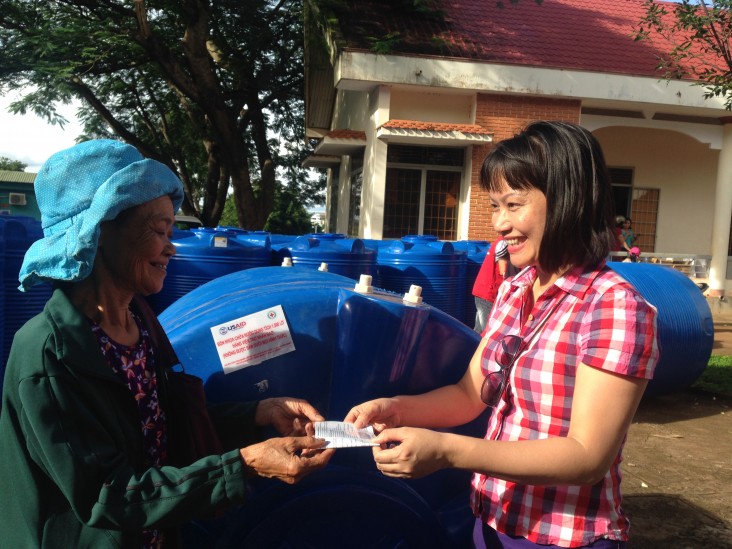
Vietnam and the United States began working together in 1989, when USAID launched programs benefiting Vietnamese with disabilities through the Patrick Leahy War Victims Fund and the Displaced Children and Orphans Fund. People with disabilities throughout Vietnam received rehabilitative services, prosthetics and orthopedic support devices, and improved care through training of doctors and other health workers. In the early 1990s, program activities in Vietnam were ‑ for the most part‑ limited to assistance to war victims, orphans and disaster relief.
Since the official normalization of the U.S.‑Vietnam relationship in 1995, USAID's assistance has grown steadily, changing significantly in terms of funding levels, complexity, and the scope of its programs.
Currently, USAID manages comprehensive portfolios in economic growth and governance, civil society, higher education, health (including HIV/AIDS and Emerging Pandemic Threats), environment and climate change, biodiversity/countering wildlife trafficking, support to persons with disabilities and other vulnerable populations and disaster assistance. USAID has played a key role in helping Vietnam reach out to global markets through its accession to the World Trade Organization and the Vietnam - U.S. Bilateral Trade Agreement. In partnership with the Government of Vietnam, USAID continues to promote greater market integration by supporting Vietnam’s implementation of free trade agreements. We are also joining hands with our Vietnamese counterparts on a historic project to clean up dioxin contamination at Danang Airport, where Agent Orange was stored and handled.
USAID Key Milestones
- 1989: Disabilities programming through Patrick Leahy War Victims Fund and the Displaced Children and Orphans Fund.
- 2000: USAID/Vietnam opens coordination office in Hanoi.
- 2001: USAID launches the Support for Trade AcceleRation (STAR) project to support Vietnam for BTA implementation.
- 2004: Vietnam becomes 15th PEPFAR (U.S. President’s Emergency Plan for AIDS Relief) Focus Country.
- 2005: Agreement for Economic and Technical Cooperation signed.
- 2007: USAID/Vietnam Representative Office established.
- 2010: USAID/Vietnam reaches full Mission status.
- 2013: Presidents of the United States and Vietnam agree to a “Comprehensive Partnership” identifying a number of key priority areas supported by USAID: Trade and Economic Ties, Science and Technology Cooperation, Education Cooperation, Environment and Health, and War Legacy Issues.
- 2013: USAID/Vietnam’s Country Development Cooperation Strategy for 2014-2018 Approved.
- 2016: During former President Barack Obama’s historic visit to Vietnam, both countries highlight that development cooperation continues to be a driving force in the bilateral relationship and pledge to advance inclusive economic growth, climate mitigation and adaptation; combat wildlife trafficking; and clean up dioxin contamination.
- 2017: Vietnamese Prime Minister Nguyen Xuan Phuc meets with President Donald Trump in Washington, D.C., further affirming the strength of the U.S.-Vietnam bilateral partnership in global health security; HIV/AIDS relief and prevention; dioxin; climate change; protection of human rights, including the disabled; and trade. Read their May 31, 2017 joint statement here.








Comment
Make a general inquiry or suggest an improvement.